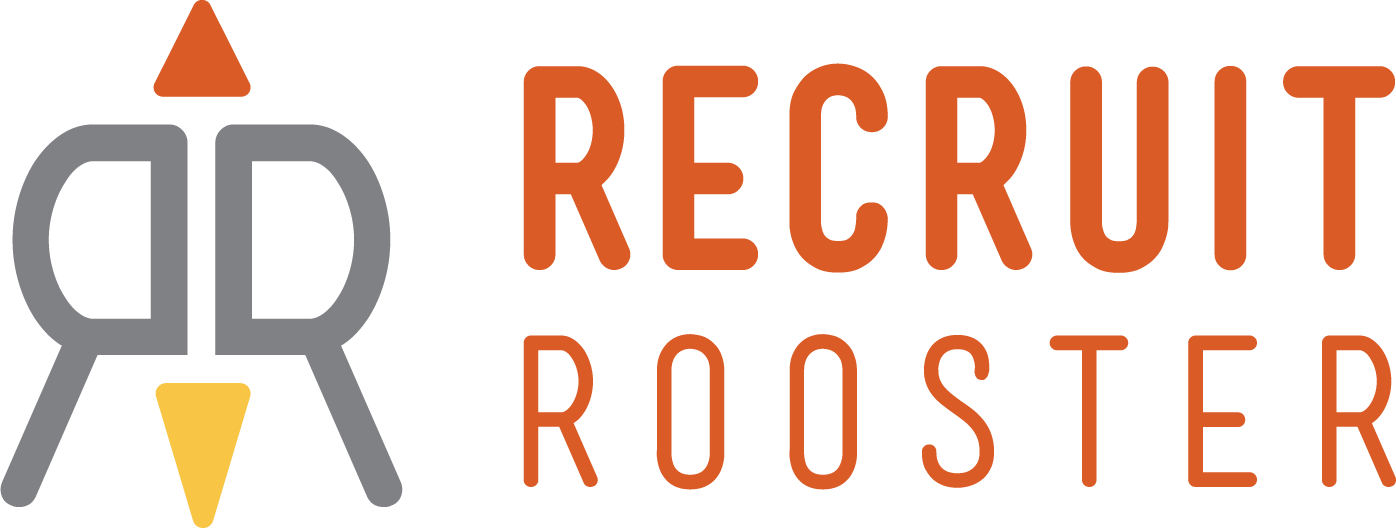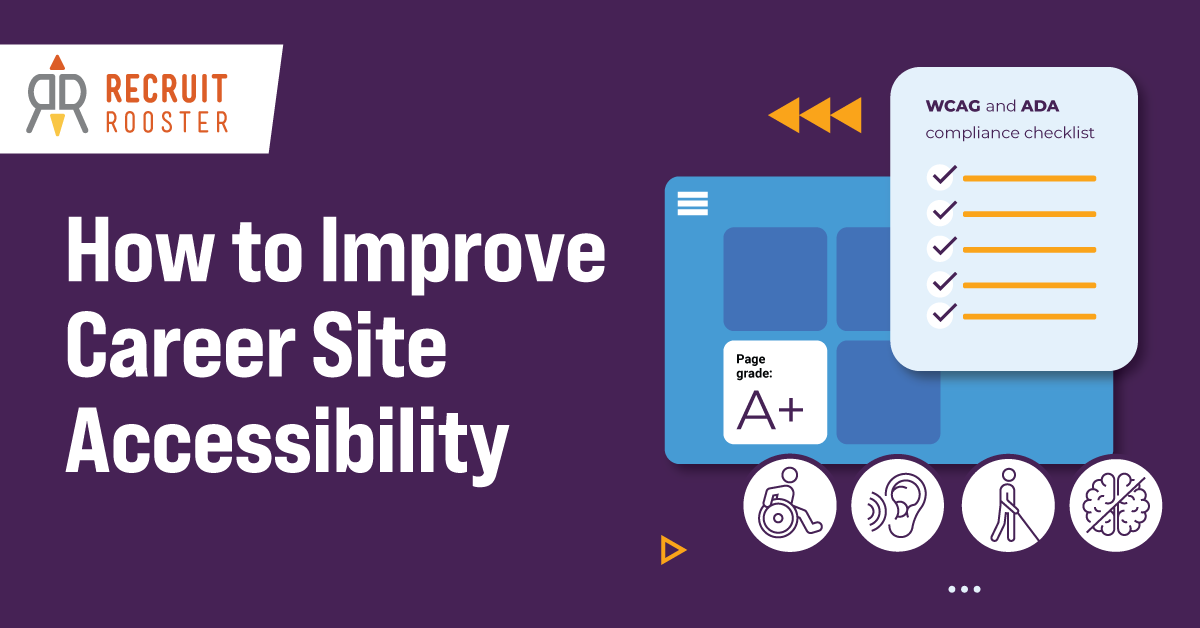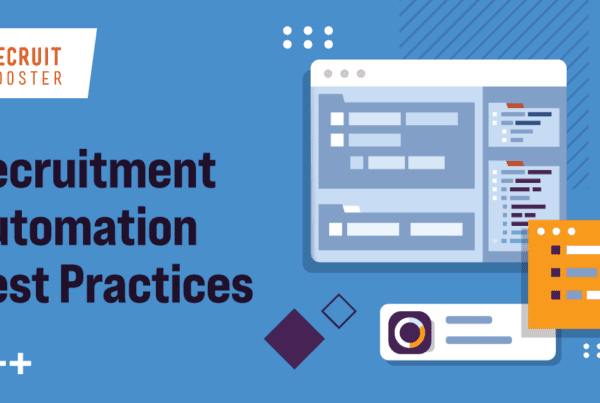Make Your Career Site More Accessible with These 10 Strategies
Accessibility is not just a compliance requirement but a crucial aspect of creating an inclusive experience for all users, including job seekers visiting your career site. Accessibility ensures that individuals with disabilities can perceive, understand, navigate, and interact with your content effectively. Here’s why prioritizing it on your career site matters, along with practical steps to improve career site accessibility:
Why Career Site Accessibility Matters
- Broadening Candidate Reach: Accessibility ensures that candidates with disabilities, such as visual impairments or motor disabilities, can access and engage with your job opportunities.
- Legal and Ethical Responsibility: Many countries have laws and regulations, such as the Americans with Disabilities Act (ADA) in the US, that mandate digital accessibility. Ensuring compliance mitigates legal risks and demonstrates your commitment to inclusivity.
- Enhancing User Experience: Accessible design benefits all users by improving usability, navigation, and overall user experience, leading to increased engagement and application rates.
Statistics on Accessibility
- Global Impact: According to the World Health Organization (WHO), over 1 billion people worldwide live with some form of disability, emphasizing the need for accessible digital content.
- Market Demand: WebAIM’s survey found that 98.1% of the top 1 million websites have accessibility issues, highlighting a widespread need for improvement across digital platforms.
How to Improve Career Site Accessibility
- Ensure Semantic HTML Structure: Use proper HTML tags (like headings, lists, and labels) to create a logical structure that is readable by screen readers and other assistive technologies.
- Provide Alternative Text (Alt Text): Include descriptive alt text for images to ensure that visually impaired users understand the content conveyed by visuals.
- Implement Keyboard Navigation: Ensure all functionalities and interactive elements on your career site can be accessed and operated using a keyboard alone, without requiring a mouse.
- Color Contrast and Fonts: Use high contrast between text and background colors to improve readability, and choose fonts that are easy to read and resizable without loss of content or functionality.
- Video and Audio Accessibility: Provide captions or transcripts for videos and ensure that audio content is accompanied by text alternatives for users who are deaf or hard of hearing.
- Create Accessible Forms: Label all form fields clearly and provide instructions or error messages that are easy to understand. Use fieldsets and legends for groups of related fields, and ensure that forms can be navigated and submitted using a keyboard.
- Ensure Responsive Design: Design the career site to be fully functional and accessible on all devices, including desktops, tablets, and smartphones. Test the site on different screen sizes to ensure content remains accessible.
- Use Descriptive Link Text: Avoid vague link text like “click here” or “read more.” Instead, use descriptive text that conveys the purpose of the link, such as “view job openings in marketing.”
- Optimize Page Load Speed: Ensure your career site loads quickly by optimizing images, leveraging browser caching, and minimizing code. Faster load times improve the user experience for all visitors, including those with disabilities.
- Conduct Regular Accessibility Audits: Perform regular audits to identify and fix accessibility issues. Additionally, consider involving users with disabilities in testing to gain direct feedback on accessibility improvements.
Recruit Rooster’s Career Site Accessibility Services
Recruit Rooster offers comprehensive methods and services to improve career site accessibility that will ensure your organization’s digital presence is inclusive and compliant with accessibility standards. These services are designed to create a seamless and engaging experience for all job seekers, including those with disabilities. Here’s a summary of the key features and benefits:
Compliance with Standards
Recruit Rooster ensures your career site meets Web Content Accessibility Guidelines (WCAG) 2.1 standards, helping you stay compliant with ADA, Section 508, and other relevant regulations.
Accessibility Audits
Conduct thorough accessibility audits to identify and address barriers that may hinder users with disabilities. This includes evaluating the site’s design, content, and functionality.
Remediation and Optimization
Provide remediation services to fix identified issues, optimizing the site’s HTML, CSS, and JavaScript for better accessibility. This involves making technical adjustments and content enhancements.
Ongoing Monitoring and Support
Offer continuous monitoring and support to maintain accessibility over time. Regular updates and audits ensure your career site remains compliant with evolving standards and best practices.
Accessible Design and Development
Implement accessible design principles from the ground up, ensuring that new career sites are built with inclusivity in mind. This includes keyboard navigation, screen reader compatibility, and high-contrast color schemes.
Training and Resources
Provide training sessions and resources for your team to understand accessibility principles and practices. This empowers your staff to create and maintain accessible content.
User Testing with Assistive Technologies
Conduct user testing with individuals who use assistive technologies to gather real-world feedback and make necessary adjustments. This ensures the career site meets the needs of all users.
Custom Solutions
Tailor accessibility solutions to your organization’s specific needs, offering custom plans that align with your goals and requirements.
Recruit Rooster’s career site accessibility services aim to create an inclusive digital environment where all job seekers can engage with your content effectively, ultimately enhancing your employer brand and widening your talent pool.
Conclusion
Designing an accessible career site isn’t just about compliance—it’s about inclusivity and creating an environment where all candidates, regardless of ability, can fully engage with your employer brand and job opportunities. By prioritizing accessibility, you not only expand your candidate pool but also demonstrate your commitment to diversity, equity, and inclusion. Incorporate these best practices to improve career site accessibility, ensuring that every candidate has an equal opportunity to explore, apply, and succeed within your organization. Together, let’s build a digital experience that empowers all individuals and drives positive change in the recruitment landscape.





